- The Power of Lobelia: Boosting Seedlings with Second Picking and Essential Feeding
- Second Picking: Enhancing Root Growth
- Essential Feeding: Nourishing Seedlings for Optimal Growth
- Conclusion
- Seedling Development: The Importance of Lobelia
- Why Lobelia is Important for Seedling Development
- How to Incorporate Lobelia into Seedling Development
- In Conclusion
- The Benefits of Second Picking
- 1. Improved Air Circulation
- 2. Reduced Competition
- 3. Enhanced Root Development
- 4. Preventing Overcrowding
- 5. Quality Control
- 6. Time and Resource Management
- Securing Strong Seedlings: How to Perform Second Picking
- Essential Feeding for Optimal Seedling Growth
- 1. Use a balanced fertilizer
- 2. Gradually increase feeding strength
- 3. Pay attention to micronutrients
- 4. Avoid overfeeding
- 5. Maintain a healthy pH level
- 6. Water properly
- The Role of Lobelia in Feeding Seedlings
- Effective Feeding Techniques for Maximum Results
- 1. Choose the Right Fertilizer
- 2. Follow a Feeding Schedule
- 3. Apply Fertilizer in Small Amounts
- 4. Water Deeply After Feeding
- 5. Monitor Nutrient Levels
- 6. Use Complementary Feeding Methods
- 7. Maintain Proper Light and Temperature
- 8. Keep Track of Feeding Results
- Choosing the Right Lobelia Fertilizer
- Nutrient Composition
- Questions and Answers:
- What is lobelia and why is it important for seedlings?
- How do I pick lobelia for the second time?
- What is essential feeding for lobelia seedlings?
- Can I use any type of fertilizer for lobelia seedlings?
- How often should I feed lobelia seedlings?
- Can I grow lobelia seedlings indoors?
- What are some common problems that can occur with lobelia seedlings?
- Videos: lobelia seeds germinated, when to start feeding seedlings, lobelia seedlings
Lobelia is a versatile and popular plant known for its delicate, colorful flowers and ability to thrive in various growing conditions. Whether you are an experienced gardener or just starting out, understanding the importance of second picking and essential feeding for lobelia seedlings is essential to ensure their optimal growth and health.
Second picking refers to the process of transplanting young lobelia seedlings from their initial overcrowded growing space into individual containers or a larger planting bed. This is a critical step in the development of lobelia seedlings, as it allows them the space and nutrients they need to grow into strong, vibrant plants.
Essential feeding is another crucial aspect of lobelia seedling care. Lobelia plants have specific nutritional needs that must be met to ensure their successful growth. Applying a balanced fertilizer, rich in essential nutrients like nitrogen, phosphorus, and potassium, can provide the lobelia seedlings with the necessary elements for healthy development.
Proper nutrition is key to helping lobelia seedlings establish a strong root system and promote vigorous growth. Additionally, regular watering and providing adequate sunlight are also vital for their overall well-being. With proper second picking and essential feeding, your lobelia seedlings will have the best chance of thriving and becoming beautiful, blooming plants.
So, whether you are growing lobelia for hanging baskets, containers, or garden borders, ensuring the proper care and attention to second picking and essential feeding will help you achieve strong and healthy lobelia seedlings that will bring vibrant color and beauty to your outdoor space.
The Power of Lobelia: Boosting Seedlings with Second Picking and Essential Feeding
Lobelia is a popular flowering plant that is known for its vibrant colors and delicate blooms. However, it is not just a beautiful addition to your garden; lobelia also plays a crucial role in boosting the growth and strength of seedlings. Through the process of second picking and essential feeding, lobelia helps seedlings to develop into strong and healthy plants.
Second Picking: Enhancing Root Growth
Second picking is a technique used to promote healthy root growth in young seedlings. It involves removing the central shoot of the plant, thus encouraging the growth of lateral branches and a more robust root system. By allowing the plant to focus its energy on lateral growth, second picking helps to create a sturdier and more resilient seedling.
When it comes to lobelia, second picking is especially beneficial. Lobelia plants have a shallow root system, and by encouraging lateral growth, you are giving the plant a better chance to establish a strong root network. This will not only result in a healthier and more vigorous plant but also improve its ability to absorb water and nutrients from the soil.
Essential Feeding: Nourishing Seedlings for Optimal Growth
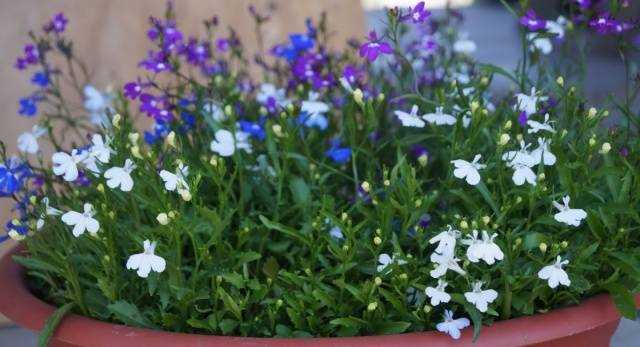
In addition to second picking, essential feeding is another key practice in boosting the growth of seedlings. Providing the right nutrients at the right time is essential for seedlings’ development, and lobelia is no exception.
Lobelia seedlings benefit from a balanced, water-soluble fertilizer with a higher phosphorus content. Phosphorus is crucial for root development and overall plant growth. By incorporating this fertilizer into your feeding routine, you are giving your lobelia seedlings the nutrients they need to thrive.
It is important to note that overfeeding can be detrimental to seedlings. Follow the instructions on the fertilizer packaging and adjust the dosage accordingly. A general rule of thumb is to start with a diluted solution and gradually increase the strength as the seedlings grow.
Conclusion
In conclusion, lobelia is a powerful ally in boosting seedlings’ growth and strength. By implementing second picking for enhanced root growth and providing essential feeding with the right nutrients, you can ensure that your lobelia seedlings develop into vigorous and healthy plants. Incorporate these practices into your gardening routine, and you will be rewarded with beautiful and resilient lobelia blooms.
Seedling Development: The Importance of Lobelia
The development of strong and healthy seedlings is a crucial step in the gardening process. It sets the foundation for the future growth and productivity of plants. One plant that plays a significant role in seedling development is Lobelia, a versatile and hardy plant species.
Why Lobelia is Important for Seedling Development
Lobelia has several characteristics that make it an essential component in seedling development:
- Rapid Germination: Lobelia seeds are known for their quick germination, which allows for faster seedling development. This is particularly beneficial in situations where time is of the essence.
- Strong Root System: Lobelia develops a strong and extensive root system, which helps seedlings establish themselves firmly in the soil and access essential nutrients and water.
- Compact Growth: Lobelia seedlings have a compact growth habit, making them suitable for growing in containers or small spaces. This characteristic is especially valuable for gardeners with limited space.
- Ornamental Value: In addition to its functional benefits, Lobelia also adds aesthetic value to seedling development. Its vibrant flowers, available in a range of colors, can enhance the visual appeal of a garden or nursery.
How to Incorporate Lobelia into Seedling Development
To make the most of Lobelia’s benefits for seedling development, consider the following steps:
- Seed Sowing: Start by sowing Lobelia seeds in a seed tray or individual containers filled with well-draining soil mix. Moisten the soil and press the seeds gently into the surface. Avoid covering them with soil, as they require light for germination.
- Optimal Conditions: Lobelia seedlings thrive in temperatures between 65°F to 75°F (18°C to 24°C) and prefer bright, indirect sunlight. Place the seed tray or containers in a warm location with consistent moisture.
- Transplanting: Once the seedlings have developed a few sets of true leaves, they can be transplanted into larger containers or directly into the garden soil. Allow adequate spacing between plants to ensure proper air circulation.
- Feeding: Lobelia seedlings benefit from regular feeding. Use a balanced liquid fertilizer diluted to half strength every two weeks to provide them with essential nutrients for optimal growth.
- Maintenance: Keep an eye on the seedlings for signs of pests or diseases. Remove any weak or damaged seedlings to prevent the spread of potential issues.
In Conclusion
Lobelia plays a vital role in seedling development due to its rapid germination, strong root system, compact growth, and ornamental value. By incorporating Lobelia into the seedling development process, gardeners can ensure the growth of healthy and robust plants that will thrive in various garden settings.
The Benefits of Second Picking
Picking lobelia seedlings for a second time can provide numerous benefits for their growth and development. This practice involves removing the smaller, weaker seedlings from the tray and leaving only the strongest ones to continue growing.
1. Improved Air Circulation
By thinning out the seedlings during the second picking, there will be more space between plants. This allows for better air circulation around the remaining seedlings, reducing the risk of disease and promoting healthy growth.
2. Reduced Competition
Removing the weaker seedlings helps reduce competition for sunlight, water, and nutrients. The remaining seedlings will have access to more resources, leading to stronger and more vigorous plants.
3. Enhanced Root Development
With fewer plants in the tray, the roots of the remaining seedlings have more room to spread and grow. The increased space allows for improved nutrient absorption and promotes the development of a robust root system, which is essential for healthy plant growth.
4. Preventing Overcrowding
If the lobelia seedlings are not thinned out during the second picking, they can become overcrowded in the tray. Overcrowding can lead to stunted growth, increased susceptibility to disease, and overall poor plant health. By removing the weaker seedlings, you ensure that the remaining ones have enough space to thrive.
5. Quality Control
Performing a second picking allows you to select the most robust and healthy seedlings for transplantation or further growth. This helps ensure that you are working with strong plants that have the best chance of flourishing in their final location.
6. Time and Resource Management
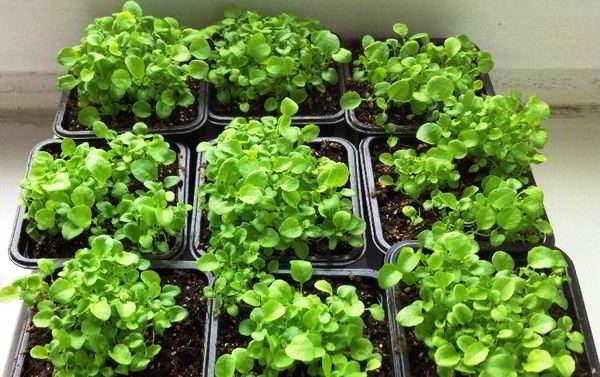
Thinning out the weaker seedlings during the second picking saves time and resources. By focusing your efforts on fewer plants, you can provide them with more individual attention, such as adequate water and nutrients, resulting in faster and more efficient growth.
By taking the time to perform a second picking and selecting the strongest seedlings, you can set your lobelia plants up for success. These benefits, including improved air circulation, reduced competition, enhanced root development, prevention of overcrowding, quality control, and efficient resource management, will contribute to the overall health and strength of your seedlings.
Securing Strong Seedlings: How to Perform Second Picking
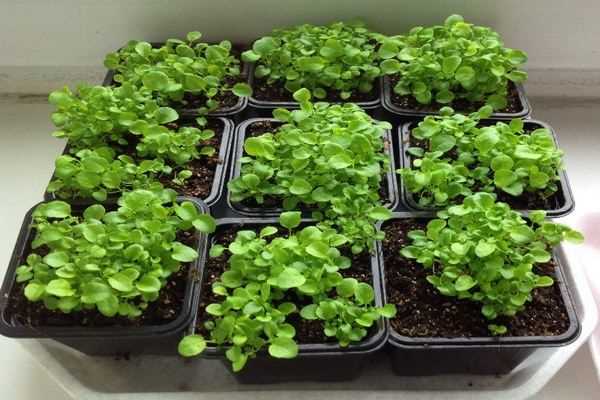
After the initial planting and germination stage, it is important to perform a process called second picking to ensure the development of strong and healthy seedlings. Second picking involves removing weaker or overcrowded seedlings to allow the remaining ones to grow and thrive. Follow these steps to perform an effective second picking:
- Timing: It is crucial to perform the second picking at the right time. Wait until the seedlings have developed their first true leaves, which are different from the cotyledons or seed leaves. The first true leaves typically appear one to two weeks after germination.
- Selecting: Carefully identify the weaker or overcrowded seedlings to be removed. Look for seedlings with stunted growth, pale or yellowing leaves, or signs of disease or damage. Also, consider the spacing requirements for the specific type of plant you are growing.
- Preparation: Before removing the selected seedlings, prepare a clean and disinfected pair of scissors or small pruning shears. This helps prevent the spread of diseases or infections between plants.
- Removal: Gently hold the base of the selected seedling and carefully cut it at ground level, ensuring not to disturb the neighboring seedlings or roots. Take your time and be gentle to minimize any damage to the remaining seedlings.
- Disposal: Collect the removed seedlings and dispose of them properly. Avoid composting them, as this could potentially spread diseases or pests.
- Aftercare: After performing the second picking, provide extra care and attention to the remaining seedlings. Water them gently and ensure they receive adequate sunlight or artificial light if grown indoors. Consider providing essential nutrients and fertilizers to support their growth.
Performing a second picking is a necessary step in promoting the overall strength and vigor of your seedlings. By removing weaker or overcrowded seedlings, you are giving the remaining ones the space and resources they need to establish a strong root system and grow into healthy plants.
Essential Feeding for Optimal Seedling Growth
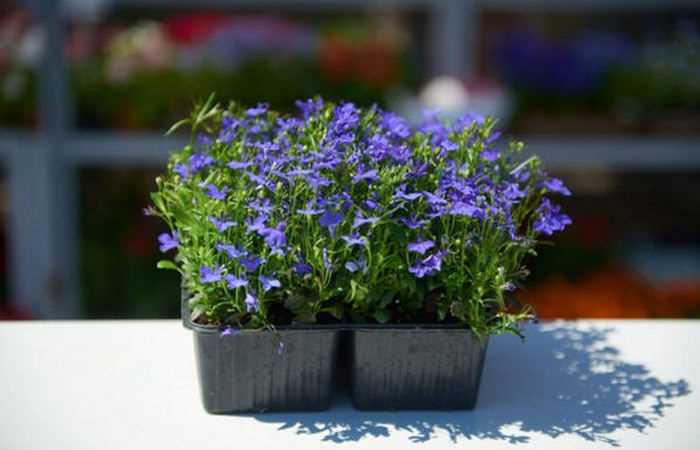
Feeding your seedlings with the right nutrients is crucial for their optimal growth. While soil and water play important roles in providing the basic elements for plant growth, seedlings require additional nutrients to support their development. Here are some essential feeding practices to ensure your seedlings receive the necessary nourishment:
1. Use a balanced fertilizer
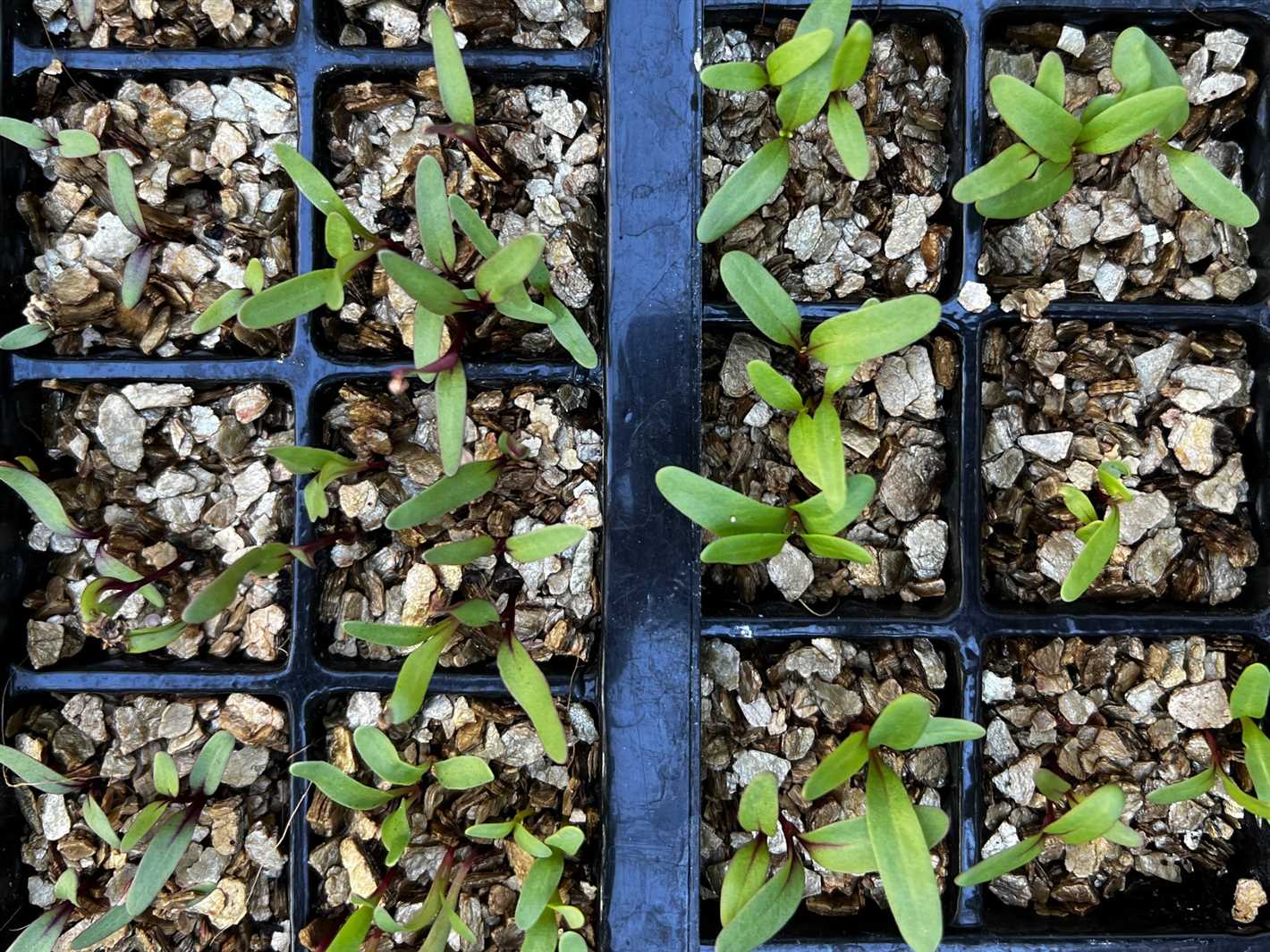
Choose a balanced fertilizer that contains equal amounts of nitrogen, phosphorus, and potassium (NPK). These nutrients are essential for overall plant growth, root development, and flowering. A balanced fertilizer will provide your seedlings with the necessary nutrients to establish healthy roots and promote vigorous growth.
2. Gradually increase feeding strength
When starting to feed your seedlings, begin with a diluted solution of fertilizer to avoid overwhelming them with nutrients. As the seedlings grow and develop, gradually increase the strength of the fertilizer solution. This will provide the seedlings with a steady supply of nutrients without causing any nutrient imbalances or stress.
3. Pay attention to micronutrients
In addition to the macronutrients (NPK), seedlings also require micronutrients for healthy growth. Micronutrients like iron, copper, zinc, and manganese play crucial roles in various plant processes. Ensure that your chosen fertilizer contains these essential micronutrients or consider supplementing with a micronutrient solution.
4. Avoid overfeeding
While it’s important to provide your seedlings with the necessary nutrients, overfeeding can be detrimental to their growth. Nutrient imbalances can lead to nutrient deficiencies or toxicities, which can stunt growth and damage the plants. Follow the recommended feeding guidelines and pay attention to any signs of nutrient deficiencies or excesses.
5. Maintain a healthy pH level
The pH level of the growing medium affects nutrient availability to the seedlings. Most seedlings prefer a slightly acidic to neutral pH range. Test the pH of your growing medium regularly and make any necessary adjustments using pH-adjusting products. Maintaining the proper pH will ensure that the nutrients are readily available for uptake by the seedlings.
6. Water properly
Proper watering practices are essential for nutrient uptake in seedlings. Overwatering or underwatering can affect the availability of nutrients to the plants. Water your seedlings thoroughly but allow the growing medium to dry out slightly between waterings. This will prevent waterlogged conditions and promote healthy nutrient uptake.
Following these essential feeding practices will help provide your seedlings with the necessary nutrients for optimal growth. Healthy, well-nourished seedlings are more likely to establish well in the garden and produce strong, vigorous plants.
The Role of Lobelia in Feeding Seedlings
- Lobelia is a key component in the feeding process for seedlings.
- As a natural source of essential nutrients, Lobelia provides seedlings with the necessary elements for healthy growth.
- One of the main benefits of using Lobelia is its ability to promote root development.
- Strong and healthy roots are essential for seedling growth as they provide stability and access to water and nutrients.
- Lobelia stimulates the growth of fine root hairs, which greatly increases the surface area for nutrient absorption.
- In addition to promoting root development, Lobelia also enhances overall plant vigor.
- It helps seedlings establish a strong foundation, ensuring they can withstand the challenges of transplantation and environmental stress.
- Lobelia contains important minerals and trace elements, such as calcium, magnesium, and iron, that are crucial for seedling nutrition.
- These nutrients play a key role in various cellular processes, including photosynthesis and energy production.
- Furthermore, Lobelia contains organic compounds that improve soil structure and fertility, enhancing the overall nutrient availability for seedlings.
- By incorporating Lobelia into the feeding regimen, seedlings receive a well-rounded supply of essential nutrients for optimal growth and development.
Effective Feeding Techniques for Maximum Results
1. Choose the Right Fertilizer
When it comes to feeding your seedlings, selecting the right fertilizer is crucial. Look for a fertilizer high in nitrogen, phosphorous, and potassium (NPK), as these nutrients are essential for healthy plant growth.
Additionally, consider using an organic fertilizer that is slow-release and rich in micronutrients. Organic fertilizers promote long-term soil health and help prevent nutrient imbalances.
2. Follow a Feeding Schedule
Consistency is key when it comes to feeding your seedlings. Develop a feeding schedule and stick to it. Typically, seedlings need to be fed every 1-2 weeks during their growing season.
However, be mindful not to overfeed your seedlings, as this can lead to nutrient burn and other problems. Always follow the recommended dosage guidelines provided by the fertilizer manufacturer.
3. Apply Fertilizer in Small Amounts
When applying fertilizer to your seedlings, it’s important to use small amounts. Overfertilization can be detrimental to young plants.
Measure out the proper amount of fertilizer according to the package instructions and distribute it evenly around the seedlings. Avoid concentrating the fertilizer in one spot, as this can cause root burn.
4. Water Deeply After Feeding
After applying fertilizer to your seedlings, make sure to give them a thorough watering. This helps to distribute the nutrients evenly throughout the soil and prevent any potential nutrient imbalances.
Water deeply at the base of the plants, taking care not to splash water on the leaves. Be mindful of the specific watering needs of your seedlings, as some plants prefer slightly drier conditions while others require more moisture.
5. Monitor Nutrient Levels
Regularly monitor the nutrient levels of your seedlings to ensure they are receiving adequate nutrition. This can be done through soil testing or by observing the overall health and growth of the plants.
If you notice any signs of nutrient deficiencies or imbalances, adjust your feeding regimen accordingly. It may be necessary to increase or decrease the frequency or dosage of fertilizer application to meet the specific needs of your seedlings.
6. Use Complementary Feeding Methods
In addition to regular fertilizer application, consider incorporating other feeding methods to maximize results. For example, foliar feeding involves spraying a nutrient solution directly onto the leaves of the seedlings.
Another option is to use compost or other organic matter as a topdressing around the seedlings. This helps to improve soil structure and provides slow-release nutrients over time.
7. Maintain Proper Light and Temperature
Remember that proper light and temperature conditions are essential for seedling growth and nutrient absorption. Make sure your seedlings are receiving adequate exposure to sunlight or artificial light sources.
Additionally, maintain the appropriate temperature range for your seedlings, as extreme temperatures can affect nutrient uptake and plant health.
8. Keep Track of Feeding Results
Finally, keep track of the results of your feeding efforts. Take note of how your seedlings respond to different fertilizers and feeding techniques.
By documenting your observations, you can fine-tune your feeding regimen over time and achieve maximum results for your seedlings.
Choosing the Right Lobelia Fertilizer
When it comes to growing lobelia seedlings, choosing the right fertilizer is crucial for their growth and development. The right fertilizer will provide the necessary nutrients for healthy plants and vibrant flowers.
Here are some key factors to consider when selecting a lobelia fertilizer:
Nutrient Composition
Look for a fertilizer that is specifically formulated for flowering plants or seedlings. Lobelia plants require a balanced mix of nutrients such as nitrogen, phosphorus, and potassium, along with essential micronutrients like iron and magnesium.
Check the fertilizer package for the N-P-K ratio, which represents the percentage by weight of nitrogen (N), phosphorus (P), and potassium (K) in the fertilizer. A recommended ratio for lobelia seedlings is 10-10-10 or 20-20-20.
Consider using a slow-release fertilizer for lobelia seedlings. Slow-release fertilizers provide a steady supply of nutrients over an extended period of time, reducing the risk of overfertilization. This can help promote strong root development and overall plant vigor.
Choose a fertilizer that is suitable for your preferred application method. Granular fertilizers can be sprinkled on the soil surface and watered in, while liquid fertilizers can be mixed with water and applied as a foliar spray or directly to the soil.
Decide whether you want to use organic or synthetic fertilizers. Organic fertilizers are derived from natural sources and promote long-term soil health. Synthetic fertilizers, on the other hand, are chemically manufactured and provide immediate nutrient availability.
Consider the cost and availability of the lobelia fertilizer. Some fertilizers may be more expensive or harder to find, depending on your location. Choose a fertilizer that fits within your budget and is readily accessible.
Read product ratings and reviews before purchasing a lobelia fertilizer. This can give you valuable insights into the effectiveness and satisfaction of other gardeners who have used the product. Look for fertilizers with positive feedback and high ratings.
Consult with gardening experts or local nursery professionals for their recommendations on the best lobelia fertilizer. They can provide valuable advice based on your specific growing conditions and the needs of your lobelia plants.
By considering these factors and doing some research, you can choose the right lobelia fertilizer that will help your seedlings thrive and produce beautiful flowers.
Questions and Answers:
What is lobelia and why is it important for seedlings?
Lobelia is a flowering plant that is commonly used as bedding plants or potted plants. It is important for seedlings because it promotes stronger growth and vitality.
How do I pick lobelia for the second time?
To pick lobelia for the second time, you need to wait until the first flush of flowers has faded and then trim it back to about half of its original size. This will encourage new growth and more blooms.
What is essential feeding for lobelia seedlings?
Essential feeding for lobelia seedlings involves providing them with a balanced fertilizer that is rich in nutrients such as nitrogen, phosphorus, and potassium. This will help promote healthy growth and vibrant blooms.
Can I use any type of fertilizer for lobelia seedlings?
It is recommended to use a balanced fertilizer specifically formulated for flowering plants or seedlings. This will ensure that the lobelia seedlings are getting the right nutrients they need for optimal growth and development.
How often should I feed lobelia seedlings?
Lobelia seedlings should be fed every two weeks during the growing season. This will provide them with a steady supply of nutrients to support their growth and development.
Can I grow lobelia seedlings indoors?
Yes, you can grow lobelia seedlings indoors. They can be started from seeds or purchased as young plants from a nursery. Just make sure to provide them with adequate light, water, and nutrients for healthy growth.
What are some common problems that can occur with lobelia seedlings?
Some common problems that can occur with lobelia seedlings include root rot, fungal diseases, and aphid infestations. It is important to monitor the plants regularly and take appropriate measures to prevent or treat these issues.







